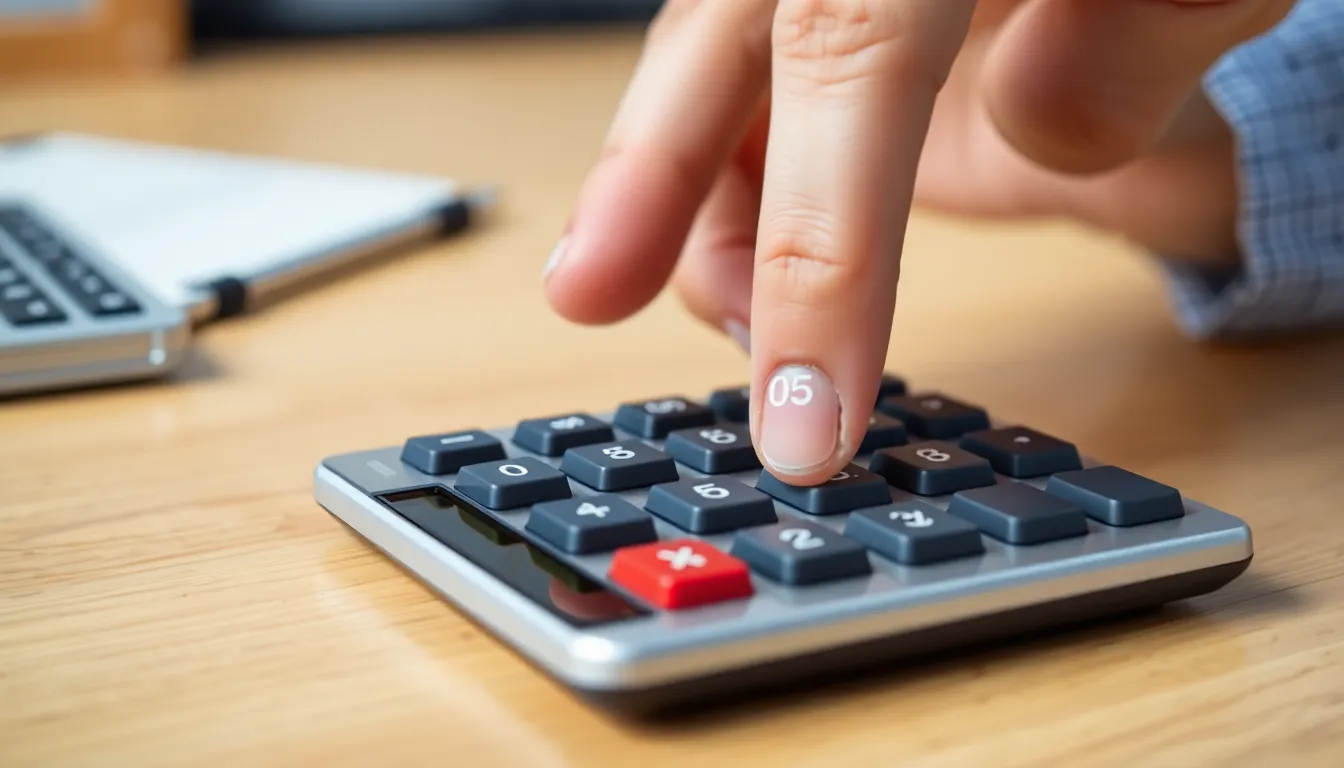Table of Contents
ToggleEver found yourself staring at a decimal like .05 and wondering what it really means? You’re not alone. Decimals can be as confusing as trying to decipher a cat’s meow. But fear not! Understanding .05 as a fraction is easier than finding the last slice of pizza at a party.
Understanding .05 as a Fraction
Understanding .05 as a fraction simplifies the concept of decimals significantly. Many learners often struggle with decimals, yet basic definitions clarify their use.
Definition of a Decimal
A decimal represents a fraction whose denominator is a power of ten. This numeric format allows precise representation of numbers less than one. For example, .05 signifies five hundredths, indicating a fraction of 5 over 100. Simplifying this fraction involves finding the greatest common divisor, which is 5. Thus, .05 as a fraction becomes 1 over 20 after reduction. Recognizing decimals’ role fosters better numerical comprehension, particularly in mathematics and everyday applications.
Converting Decimals to Fractions
Converting decimals to fractions follows a straightforward process. Start by identifying the decimal’s place value; for .05, the two digits after the decimal point suggest it’s in the hundredths place. Write the decimal as a fraction with 5 as the numerator and 100 as the denominator. Simplifying reveals that dividing both the numerator and denominator by 5 results in 1 over 20. This method allows individuals to transform any decimal into an equivalent fraction easily. Keeping these steps in mind enhances one’s mathematical skills and fluency with fractions.
Steps to Convert .05 to a Fraction

Converting .05 to a fraction involves a few straightforward steps. Understanding the process ensures clarity in mathematical expressions and enhances numerical fluency.
Identifying the Place Value
First, recognize the place value of the decimal. In the case of .05, the last digit, 5, has a position in the hundredths place. Thus, this decimal represents five hundredths. Identifying the place value is crucial because it directly relates to the fraction’s denominator. Each decimal place corresponds to a power of ten. Therefore, .05 translates to 5 over 100.
Simplifying the Fraction
Next, simplifying the fraction to its lowest terms is essential. The fraction 5 over 100 can be simplified by dividing both the numerator and the denominator by their greatest common divisor, which is 5. This yields 1 over 20. The simplified form clarifies the relationship between the decimal and the fraction, making it easier to interpret and utilize in various mathematical contexts.
Examples of .05 as a Fraction
Understanding .05 as a fraction illuminates its practical applications in everyday situations.
Practical Uses of .05
.05 often appears in various contexts such as finance, measurements, and statistical data. In financial transactions, it can represent five cents, helpful when determining costs and making change. Many measurement systems utilize .05 for precision in scientific experiments, ensuring accuracy in results. Similarly, in statistics, .05 commonly signifies a significance level, crucial for hypothesis testing. Each scenario highlights the importance of grasping decimal conversions like .05.
Comparing with Other Fractions
Comparing .05 with other fractions offers insight into its numerical value. For instance, .05 equates to 1 over 20, which is less than .1, or 1 over 10, showing how decimals translate into smaller fractions. Another example includes .25, which is 1 over 4, emphasizing that .05 represents a much smaller part of a whole. Understanding these comparisons facilitates a better grasp of fractions. It aids in recognizing relationships among numbers critical in both academic and practical applications.
Common Mistakes in Conversion
Converting .05 to a fraction often leads to common errors. Understanding place values plays a crucial role in avoiding these mistakes.
Misunderstanding Place Values
Recognizing the importance of place values is vital in converting decimals accurately. The decimal .05 represents five hundredths. Confusion arises when individuals misinterpret the decimal point and mistakenly assume the last digit is in the tenths place. This error leads to incorrect fractions, such as 5 over 10 instead of the correct 5 over 100. Identifying that the digit 5 sits in the hundredths place keeps conversions accurate. Additionally, mistakes in identifying place values can extend beyond just decimals, affecting broader mathematical operations.
Errors in Simplification
Simplifying fractions presents another area where errors frequently occur. Converting .05 to 5 over 100 requires dividing both the numerator and denominator by their greatest common divisor. Many individuals overlook this step, resulting in retaining the fraction in an unsimplified form. The greatest common divisor for 5 and 100 is 5, allowing for accurate simplification to 1 over 20. Ignoring this simplification can lead to misrepresentations in calculations. Thus, ensuring accurate simplification enhances clarity and accuracy in mathematical expressions.
Understanding .05 as a fraction not only simplifies mathematical concepts but also enhances everyday decision-making. By recognizing that .05 equals 1 over 20, individuals can navigate financial transactions and measurements with greater confidence.
This clarity can prevent common mistakes and foster a deeper understanding of decimals and fractions. Whether in academics or daily life, grasping the relationship between decimals and fractions is an essential skill. With practice, anyone can master this concept and apply it effectively in various contexts.





